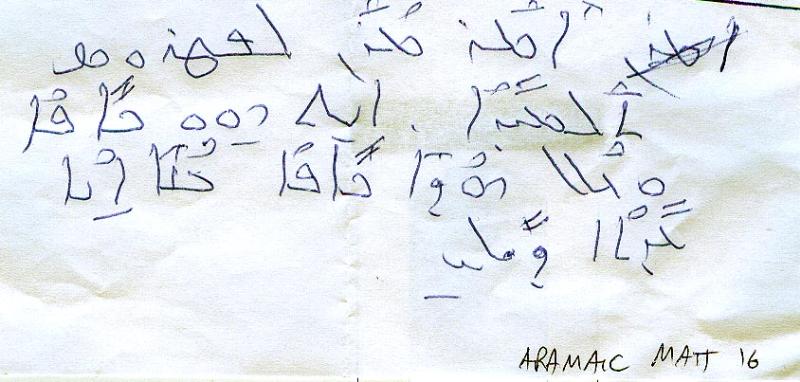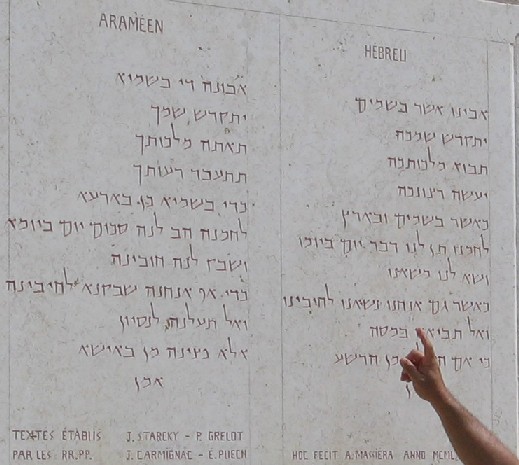

See also In John 20:17 does Jesus intent ἀναβέβηκα to have a secondary meaning related to sacrifice? Thus, this method of looking for the historic Jesus using Jesus’ words points to the same Jesus portrayed in the New Testament.

Here Jesus’ own words seem to point his disciples to Jesus’ sacrificial death and atonement. The fact is Jesus’ words having a secondary meaning often more important than the primary is not foreign in the Gospel of John. Thus, in the Jewish mind this word also brings up the thought of to pay or make restitution, to restore or make peace, to make whole. While שָׁלֵם in the context of translating Τετέλεσται in John 19:30 has the meaning, “It is finished,” שָׁלֵם in the Torah has the meaning to make restitution. The Hebrew word that Τετέλεσται (it is finished) best translates is שָׁלֵם, which is how the Syriac Peshitta* and modern Hebrew** translations translate Τετέλεσται in John 19:30. UPDATE: They seem to have taken the hint, and have changed their book cover to a much more boring red-ish-thing.Note: I am not disputing how the English translations translate Τετέλεσται, but pointing out the secondary meaning of the word Jesus probably used. Now, if someone is trying to produce a “translation” of the Aramaic New Testament to help spread their faith in Christianity, but they can’t tell Aramaic apart from an inscription in a different language which just so happens to be about spreading Buddhism that they came across on Google - perhaps they should reconsider what they’re up to. Earlier it was much higher, and because of this it has caused all sorts of delightful confusion. However, guess which title Google Image Search snapped up?Īs of writing this, if one simply searches for “aramaic” in Google Image search, this is the first nice looking carved inscription that appears in the search results, about half way down the page. This image, however, simply wasn’t such an example, so the author subsequently corrected this mistake by changing the description to “ Inscription in Brahmi on the pillar of Sarnath.” (Scroll down on the Wikimedia page, you’ll see it.) Whoever uploaded it simply made a mistake, as one of the languages that Ashoka did use from time to time was Imperial Aramaic. When this image was originally uploaded to Wikipedia, it was under the title “ Aramaic Inscriptures in Sarnath.jpg“. Many of the Ashoka inscriptions were bi- or tri-lingual… and this is where the Aramaic confusion comes in. Yes, that wonderful carved text is in Brahmi script from one of the Edicts of Ashoka at Sarnath - official declarations issued in the 3rd century BCE in effort to spread Buddhism. Why is there Brahmi text about Buddhism on the cover of an Aramaic book about Messianic Christianity? I could be wrong, but the Netzari website appears to be a Messianic sect in the Sacred Name Movement persuasion that has produced a “new edition” from (apparently) extant translations of Aramaic texts where the names have been changed to (rather poor) transliterations of late Classical Eastern Syriac terms because they - among others - are “Ancient Galilean Aramaic renderings.”ĭespite… serious methodological problems, I can at least navigate around all of that and make sense of it… but there is one glaring problem that I don’t get:

So let’s take a moment to pick this apart and make some sense of it. The Ancient Aramaic translates the correct name of ‘Eil witch refers to the ‘Absolutely Eternal’ Allaha, and it introduces the Aramaic rendering of Maran for Lord, Along with other Ancient Galilean Aramaic renderings. It also uses the word Allaha for HaShem (G-d). For example this new edition uses the name of MarYah Eashoa Msheekha (Lord Yeshua Messiah). This work is a new edition from translations of the Ancient Aramaic. Aramaic Peshitta.” Here is an excerpt from this book’s website:.If you can’t make out the text at the top, it reads: “Aramaic Bible: The Aramaic Covenants Long story short, I came across this book cover a few days ago: The “Netzari Emunah” In this case, it is also a prime example of how a Google search can go terribly wrong. As I’ve mentioned before on this blog, when it comes to Aramaic materials sometimes you can judge a book by its cover.


 0 kommentar(er)
0 kommentar(er)
